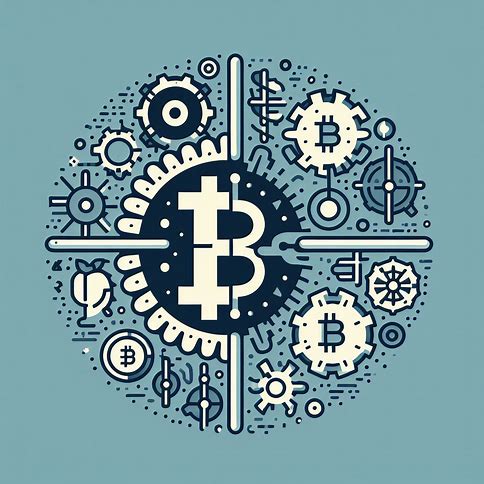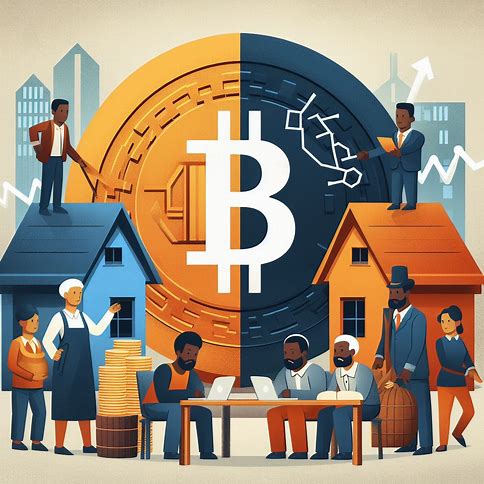If you are familiar with the basics of how Bitcoin works, you should know about one event that occurs every few years which has major implications for the cryptocurrency’s future: the Bitcoin halving.
Bitcoin halving is a pre-programmed event built into the Bitcoin protocol that cuts the reward miners receive for verifying transactions in half. In this post, we will explain what you need to know about bitcoin halving, why it is significant, and what impacts it could have on the price and mining of Bitcoin.
Jump To
TogglePurposes of Bitcoin Halving
Bitcoin halving might sound like an odd feature, but it serves some very important purposes:
1. Controlling inflation:
Unlike fiat currencies which can be printed at will by central banks, the supply of new Bitcoin entering circulation is tightly controlled. The halving ensures the rate at which new coins are minted gradually decreases over time, placing a hard cap on the total number of bitcoins that will ever exist (21 million). This controlled supply is a key part of Bitcoin’s value proposition.
2. Incentivizing miners:
The Bitcoin network is secured by miners who dedicate computing power to validating transactions. The block reward they receive, along with transaction fees, is what incentivizes them to continue this work. By reducing the block reward over time, the halving ensures transaction fees will become an increasingly important part of miner revenue as the supply of new coins dwindles.
3. Mimicking gold’s scarcity:
Many have compared Bitcoin to “digital gold” due to its fixed supply. Just as gold becomes harder to mine over time as the easiest deposits are exhausted, Bitcoin’s diminishing block rewards make it progressively more scarce. Proponents argue this makes Bitcoin an attractive store of value.
The halving is a critical part of Bitcoin’s DNA that keeps inflation in check while still rewarding the miners that form the backbone of the network. It is a completely transparent and predictable process – the dates of future halvings can be calculated years in advance.

Bitcoin Halving Schedule and Inflation Rate
The Bitcoin halving occurs once every 210,000 blocks, which is roughly once every four years. The initial block reward when Bitcoin launched in 2009 was 50 BTC. At the current block time of around 10 minutes, here is how the halving schedule has occurred:
- First halving: Occurred in November 2012 at block 210,000, reducing the reward to 25 BTC per block.
- Second halving: July 2016 at block 420,000, cutting the reward to 12.5 BTC.
- Third halving: May 2020 at block 630,000, with the current reward now at 6.25 BTC.
- Fourth halving: April 2024 at block 840,000 brings the reward down to just 3.125 BTC. This pattern will continue until roughly the year 2140 when the final halving will occur. At that point, the block reward will drop to less than 1 satoshi (0.00000001 BTC), and the total supply of 21 million bitcoins will have been fully distributed.
As the block rewards decrease, Bitcoin’s annual inflation rate also declines significantly. In its early years, Bitcoin had an annual inflation rate of over 50% as large amounts of new coins were rapidly entering circulation. But after the halving in 2020, Bitcoin’s inflation rate dropped to around 1.8%, which is lower than the 2% target rate for many fiat currencies.
This diminishing inflation rate is a key part of Bitcoin’s value proposition for many investors. With central banks around the world pursuing increasingly aggressive monetary policies and fears of inflation on the rise, Bitcoin’s hard-capped supply is seen by some as an attractive hedge.
Bitcoin Price and Halving Cycles
Bitcoin has gone through several halving cycles over the years. Here is how Bitcoin’s price has reacted around previous halvings:
1. First halving (2012):
Bitcoin had a price of around $11 at the time of the first halving. A year later in November 2013, it reached what was then an all-time high of over $1,100 before the bubble burst and the price crashed back down to around $220 by mid-2015.
2. Second halving (2016):
Bitcoin’s price started to recover in early 2016, trading at around $450 at the time of the second halving. What followed was a massive bull run, with the price peaking at nearly $20,000 in December 2017 before entering another prolonged downturn.
3. Third halving (2020):
The COVID-19 market crash saw Bitcoin’s price briefly dip below $4,000 in March 2020. But by the time of the halving in May, it had recovered to around $9,000. What followed was an extraordinary rally, with Bitcoin reaching a new all-time high above $60,000 by April 2021.
4. Fourth halving (2024):
The fourth bitcoin halving occurred on Friday, April 19, 2024, at a little after 8:09 p.m. Eastern, dropping the issuance rate of new bitcoin to 3.125 roughly every ten minutes. Despite the notable event, it is unclear whether it will lead to a sharp bitcoin price rise as it has in the past.
Looking at these cycles, it is clear that the halvings have tended to precede major bull markets for Bitcoin, even if the effects are not always immediate. Many believe this is because the reduced supply of new coins entering circulation leads to a supply shock, eventually driving up the price as demand outpaces the increasingly scarce supply.
However, many other factors influence Bitcoin’s price beyond halving cycles. Regulatory developments, institutional adoption, and overall market sentiment all play major roles.
Impact on Bitcoin Mining
The Bitcoin halvings have significant implications for the mining industry. At a basic level, the reduced block rewards mean that miners’ revenue from newly minted coins is cut in half overnight. This can put serious pressure on miners, especially those operating with tight profit margins due to high electricity or equipment costs.
In the past, the halvings have led to a phenomenon known as the “miner capitulation.” This is where less efficient miners who are unable to remain profitable post-halving are forced to shut down their rigs. This can lead to a temporary drop in the overall hash rate of the Bitcoin network as mining power comes offline.
However, the miners who can overcome the halving challenge often emerge in a stronger position. With less competition and a higher Bitcoin price (assuming the halving drives a bull market), these miners can potentially reap significant profits. This dynamic has led to increasing centralization in the mining industry over time, with larger operations that benefit from economies of scale edging out smaller players.
The halvings also incentivize miners to be more efficient and innovative. As the block rewards decrease, transaction fees will need to make up a larger share of miner revenue over time. This could lead to the development of new fee models or Layer 2 scaling solutions like the Lightning Network that aim to increase the number of transactions the network can handle.
Also, the impact of the halvings on miners can have more effects throughout the broader Bitcoin market. Miners are some of the biggest sellers of Bitcoin, often liquidating large portions of their rewards to cover operational costs. Therefore, any disruption to miner revenues could potentially impact Bitcoin’s liquidity and price in the short term.

Predictions on the 2024 Halving
Making precise predictions in the crypto space is impossible. However, we can make some educated guesses based on the historical data and the current state of the market:
1. Price impact:
Based on historical data, the 2024 halving could catalyze another major bull run in the Bitcoin price. Many models predict the price could reach six figures in the years following the halving, though there is significant variation in estimates.
2. Mining shake-up:
The halving will likely put renewed pressure on inefficient mining operations, potentially leading to another period of miner capitulation. However, the increasing sophistication and scale of professional mining facilities could mitigate this effect compared to past halvings.
3. Institutional adoption:
One major difference in the current market cycle compared to previous halvings is the unprecedented level of institutional investment in Bitcoin. From MicroStrategy to Tesla, major companies are adding Bitcoin to their balance sheets. This could dampen the volatility around the halving as these long-term holders are less likely to sell on short-term news.
4. Fee market development:
With the block reward dropping to just 3.125 BTC, the 2024 halving could be a key inflection point for the development of Bitcoin’s fee market. Miners will increasingly rely on transaction fees, which could spur the adoption of Layer 2 solutions and other scaling initiatives.
Key Takeaways
- The Bitcoin halving is a pre-programmed event that occurs every 210,000 blocks (roughly every four years) where the block reward for miners is cut in half.
- The halving serves to control inflation, incentivize miners, and make Bitcoin progressively scarcer over time, with a hard cap of 21 million bitcoins.
- Bitcoin’s inflation rate decreases with each halving, and as of 2020, it’s lower than the target rate for many fiat currencies.
- Historically, Bitcoin halvings have been followed by significant bull runs, though the effects can take months or years to fully materialize.
- Halvings can lead to “miner capitulation” as less efficient mining operations become unprofitable, potentially leading to a short-term drop in hash rate.
- The 2024 halving could be a catalyst for another bull run, increased institutional adoption, and the development of Bitcoin’s fee market as miners become more reliant on transaction fees.
FAQs
1. How many bitcoins will be left after the 2024 halving?
After the 2024 halving, 93.75% of all bitcoins will have been mined, leaving just 1.5625 million bitcoins left to be distributed over the next 100+ years until the final bitcoin is mined in 2140.
2. Will the Bitcoin price always go up after a halving?
While past halvings have been followed by significant price rallies, there’s no guarantee this pattern will continue. Many factors influence Bitcoin’s price, and the effects of the halving can take significant time to materialize.
3. What happens to miners after a halving?
Miners face reduced revenues after a halving as the block reward is cut in half. This can lead to less efficient miners shutting down, at least temporarily. However, if the Bitcoin price appreciates significantly, mining can still be highly profitable for operators that can weather the transition.
4. Will transaction fees increase after the 2024 halving?
Transaction fees will likely need to increase over time to compensate miners as the block reward continues to decrease. The 2024 halving could be a key turning point in the development of Bitcoin’s fee market. Still, the actual impacts will depend on a variety of factors including network congestion and the adoption of Layer 2 scaling solutions.
5. How does the halving affect Bitcoin’s security?
The reduced block rewards after a halving can potentially compromise Bitcoin’s security in the short term if a significant portion of hash power comes offline due to unprofitable mining operations. However, in the longer term, the increasing scarcity and potentially higher price of Bitcoin post-halving can incentivize more mining investment and thereby boost the network’s security.
6. Will the halvings continue forever?
No, the halvings will stop once the final bitcoin is mined, estimated to occur in 2140. At that point, the total supply of 21 million bitcoins will be in circulation, and miners will be incentivized solely through transaction fees rather than block rewards.










